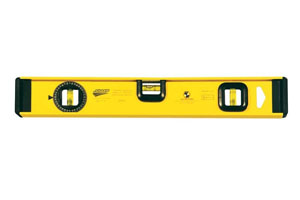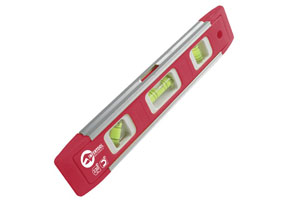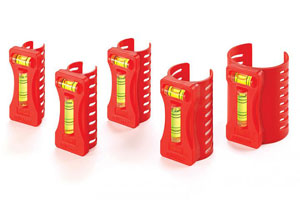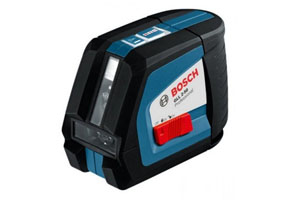 In the construction process, a very important role is played by strict adherence to the correct location of building structures or planes of finishing surfaces. If we take an aesthetic role, then a curved wall looks much worse than a flat one. It is more difficult to finish the surface with a material, for example, by wallpapering a curved surface than a flat one.
In the construction process, a very important role is played by strict adherence to the correct location of building structures or planes of finishing surfaces. If we take an aesthetic role, then a curved wall looks much worse than a flat one. It is more difficult to finish the surface with a material, for example, by wallpapering a curved surface than a flat one.
But most importantly, non-observance of the geometry of the building structure significantly reduces its strength, or even makes it non-functional. Thus, it is very important for the builder that the orientation of the building elements is strictly verified. For these purposes, there are a large number of types of such a construction tool as a building level.
Any person engaged in construction or repair probably faced the construction level. The main purpose of this tool is to determine the horizontal and vertical surfaces, as well as identify deviations from them. Multifunctional levels also allow you to determine the angles of intersection of planes and their transfer to other building elements and structures. Since even in household repairs or construction it is impossible to do without this important tool, we will tell about it in more detail.
Types of building levels
A sufficiently large number of building levels are presented on the modern market, and they differ not only in price and device, but also in their purpose.
1. Bubble level
This type of building level is most common in the building environment. The main part of this type of level is an elongated sealed flask filled with liquid. Alcohol is usually used as a liquid, since, unlike water, it does not freeze even at very low temperatures. The flask is made of impact-resistant transparent material. In this case, the flask is not completely filled, as a result of which there is an air bubble in the flask. When changing the position of the flask, the bubble has the ability to move from one end of the flask to the other.
The flask also has marks that define the middle of the flask and some distance from the center. If the flask is placed strictly horizontally, then the bubble will be located exactly in the center of the flask. If you change the angle, the bubble will move in one direction or another. To improve the accuracy of the determination, two or three flasks with different orientations are built into the building level. One flask is located along the level (in the center), one across (at the edge of the level) and one more can be on the side face of the level.
- Rectangular Level This is a classic bubble level. The basis is a rectangular structure with a width of about 50 - 70 mm, a thickness of about 20 mm and various lengths. The base is made of either aluminum or plastic. Soviet levels were performed with a steel case. By the way, the level of aluminum is much more expensive than plastic, but it is also more durable. The base profile is performed in order to save money in the form of an I-beam.
Such levels, depending on the length, are designed to determine the horizontal or vertical surfaces for various purposes. So small levels (20 -50 cm) are usually used when installing windows, door frames and other similar works. The fact is that in their process it is necessary to evaluate the level inside a limited structure (for example, a door frame), where a long level simply does not fit. Longer levels of 70 - 250 cm are already used in construction, for example, to assess the angle of inclination of rafters, the horizontalness of the upper plane of walls or floors, etc. We recommend using a longer level if possible, since measurement accuracy increases with length.

- Magnetic level In fact, it's still the same rectangular level. However, it has special magnetic inserts. This level is intended where the main type of work is metal structures. Thanks to magnetic inserts, the level can independently hold on vertical surfaces, freeing the worker's hands.

- Pipe level This type of bubble level is used when laying pipes. Of the features of this level, it is worth noting its small size and weight. The mass of this type of level usually does not exceed 100 grams. They are usually rectangular in shape, but at the same time, special U-shaped mounts, magnets or perforated tapes are located on the body. With the help of these elements, the level is fixed to the profile or pipe. At a price they are very affordable, but they have a very narrow scope. In this regard, pipe levels are practically not used in everyday life.

2. Water level
The hydraulic level, as it is otherwise called, has a special purpose. It is used to determine the horizon of surfaces located outside the general visibility, for example, in different rooms, as well as the horizontality of a surface of a very large area. In these cases, the use of a bubble level is either impossible by definition, or gives too large a measurement error. Structurally, this level consists of a water hose connecting two flasks with a printed scale.
Ordinary drinking water is used as the working fluid. The principle of operation of this level is based on the principle of communicating vessels, due to which, regardless of the location of the flasks, the water in them will be at the same level relative to the ground. As a rule, the length of the hose of such levels is in the range from 5 to 25 meters, in weight from 0.3 to 1.1 kg.
It is immediately worth noting some of the shortcomings of this level. It cannot be used at negative temperatures (unless, of course, you replace the working fluid), and also the fact that external heat sources have a significant effect on the accuracy of the tool. Under the influence of heat, the liquid expands and changes its volume. Also, air can get into the hose, which can lead to measurement errors. And finally, with the help of a water level, only a horizontal surface can be assessed.
3. Laser level
This type of building level is the most technologically advanced in the modern construction market. In fact, this is a compact device made of durable modern materials. The level of the surface is determined using a laser beam that comes from the instrument and is reflected from the surface. Fixation of the instrument can be carried out using straps, magnets or on a tripod. Depending on the model, the number of rays that are projected on the surface is from 2 to 10.
Mostly professional builders use laser levels. The use of this particular level allows you to significantly save time, besides, a number of works using other levels is simply impossible to do. For example, determine the level of the plane of the stretch ceiling or the installation of a partition. The disadvantage of this type of tool is its high cost.
Compared to other types of levels, laser levels are sometimes an order of magnitude more expensive. Most people are simply not willing to pay a large amount in exchange for features that may never be needed. In household repairs, there is usually no need to use levels of this type. Laser levels require careful handling and accuracy, as they are afraid of bumps and falls.

Other hand measuring tools
|
Useful articles |
